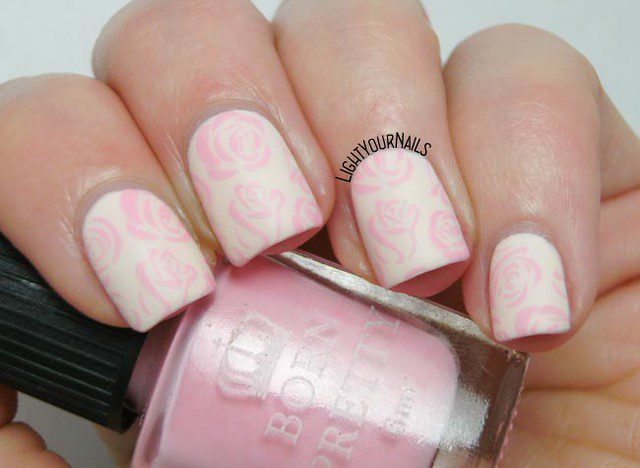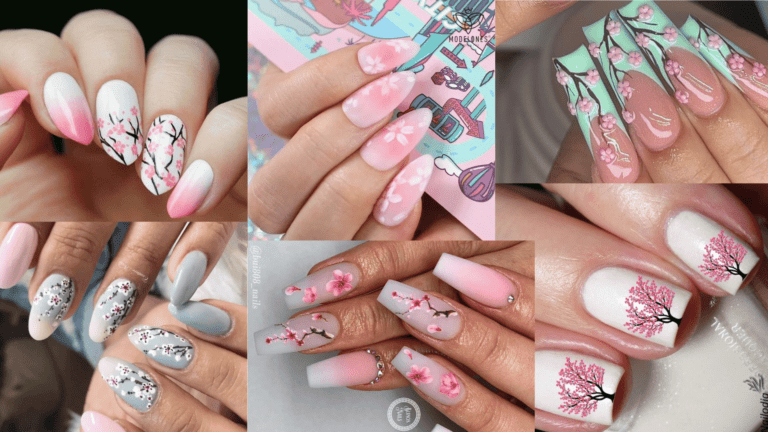“Regrowth Reality: Can Nails Regrow?”
Nails are a fascinating part of the human body, and understanding their growth and regrowth processes can provide valuable insights into overall health. In this article, we will explore the science behind nail growth, the factors that influence regrowth, common myths, and effective treatments. Whether you’re curious about the regrowth potential of nails or seeking tips for enhancing nail health, this comprehensive guide will provide you with the knowledge you need.
Key Takeaways
- Proper nutrition plays a crucial role in promoting nail regrowth and overall nail health.
- Age can impact the rate of nail growth, and understanding these changes is important for maintaining nail health.
- Trauma and illness can affect nail regrowth, and seeking medical advice may be necessary in some cases.
- Topical treatments and lifestyle changes can enhance nail regrowth and promote overall nail health.
- Identifying irreversible nail conditions is essential for determining appropriate cosmetic restoration options.
Understanding Nail Anatomy and Growth

The Structure of Nails
Nails are complex structures that play a crucial role in protecting the tips of our fingers and toes. The visible part of the nail is known as the nail plate, which is made of a hard, protective protein called keratin. This plate sits on the nail bed, a layer of skin that supplies the nail with nutrients and support.
Beneath the nail plate lies the nail matrix, where nail growth originates. The matrix produces new cells that push older ones towards the fingertip as they harden and form the nail plate. The cuticle, a thin layer of skin at the base of the nail, serves to protect the matrix from infection.
Tip: Regular moisturizing of the cuticle can help prevent dryness and promote healthy nail growth.
The structure of nails also includes the lunula, the whitish half-moon shape at the base of the nail, which is the visible part of the matrix. The hyponychium is the area beneath the free edge of the nail, providing a seal that protects the nail bed.
How Nails Grow: The Science Behind It
Nail growth is a continuous process that is largely invisible to the naked eye. At the core of this process is the nail matrix, a tissue located under the skin at the nail’s base, which is responsible for producing new nail cells. These cells multiply and harden, then are pushed forward as they accumulate, forming the visible part of the nail known as the nail plate.
The rate of nail growth can vary based on several factors, including age, nutrition, and overall health. Typically, fingernails grow at a rate of about 3.47 millimeters per month, while toenails grow more slowly. Here’s a simple breakdown of the growth stages:
- Initiation: New cells are created in the nail matrix.
- Keratinization: Cells become harder and transform into nail plate.
- Growth: The nail plate slides over the nail bed, gaining length.
- Maintenance: Continuous growth is balanced by the trimming or wearing away of the nail.
Tip: Consistent hydration is key to maintaining healthy nail growth. Just as the rest of your body requires water to function optimally, so do your nails.
Understanding the science behind nail growth is essential for recognizing how to care for your nails and what to expect when dealing with nail damage or attempting to enhance nail growth.
Factors Influencing Nail Regrowth

Nutrition and Nail Health
The health of your nails is significantly influenced by your nutritional intake. A balanced diet rich in vitamins and minerals is essential for maintaining strong, healthy nails. For instance, protein is the building block of keratin, the substance that nails are primarily composed of, making it a critical nutrient for nail strength and growth.
Certain vitamins and minerals play pivotal roles in nail health. Biotin, also known as vitamin B7, is renowned for its benefits to hair and nails. Iron prevents brittleness, while zinc contributes to immune function which in turn supports nail health. Vitamin C is crucial for collagen production, and a deficiency in vitamin B12 can lead to changes in nail color, indicating potential health issues.
Remember: A diverse diet that includes a variety of nutrients is the best approach to support nail health. Here’s a quick list of nutrients and their benefits to your nails:
- Protein: Essential for keratin production
- Biotin: Supports nail strength and growth
- Iron: Prevents nail brittleness
- Zinc: Boosts immune health and nail repair
- Vitamin C: Necessary for collagen production
- Vitamin B12: Maintains normal nail pigmentation
If you suspect your nails are reflecting a deeper health issue, it’s advisable to consult a healthcare professional for a thorough evaluation.
The Impact of Age on Nail Growth
As we age, our bodies undergo various changes, and nail growth is no exception. The rate at which nails grow tends to slow down with age due to a decrease in circulation and changes in hormone levels. This can result in nails that are more brittle and prone to splitting.
Factors such as reduced metabolic rate and the diminished ability of the body to absorb nutrients can also impact the health and growth of nails in older adults. It’s important to maintain a balanced diet and consider supplements if necessary to support nail health.
Tip: Keeping nails moisturized and avoiding harsh chemicals can help mitigate the effects of aging on nail growth.
While the aging process is inevitable, understanding how it affects nail growth can help in adopting the right nail care practices to maintain healthy nails throughout one’s life.
How Illness Can Affect Nail Regrowth
Illnesses can have a profound impact on nail regrowth, often altering the normal growth cycle and health of nails. Certain systemic diseases, such as psoriasis, can cause nails to grow at an irregular pace. For instance, it has been observed that nail psoriasis may increase the growth rate of both affected and unaffected nails. This phenomenon underscores the complex relationship between systemic health and nail physiology.
Infections and other acute illnesses can temporarily disrupt nail growth, leading to abnormalities such as ridges or discoloration. Chronic conditions, on the other hand, may lead to more persistent changes. For example, patients with thyroid disorders might experience brittle nails that grow slowly, while those with kidney disease could notice a change in nail color or texture.
Tip: Maintaining overall health is crucial for normal nail regrowth. Addressing underlying health issues can often improve nail health.
It’s important to recognize that not all changes in nail growth due to illness are negative. Some treatments for diseases may inadvertently promote faster nail growth. However, the primary goal should always be to treat the underlying condition rather than focusing solely on nail appearance.
Common Myths About Nail Growth

Can Nails Continue to Grow After Death?
One of the most pervasive myths about the human body is the belief that nails continue to grow after death. This misconception arises from an optical illusion. As the body dehydrates post-mortem, the skin around the nails retracts, giving the appearance that the nails have grown. In reality, nail growth is a function of living cells in the nail matrix, which cease activity after death.
The nail matrix, located at the base of the nail under the cuticle, is responsible for producing new nail cells. Once the body’s physiological processes stop, so does the production of these cells. Therefore, the apparent increase in nail length is not due to growth but rather to the skin’s dehydration and retraction.
It’s important to understand that nail growth is an indicator of living biological processes. Any changes in nail length after death are purely a result of natural post-mortem changes and not an indication of ongoing life functions.
The Truth About Nail Growth Rate
The belief that nails can be coaxed into growing faster through various methods is widespread. However, the growth rate of nails is primarily determined by genetics. While certain conditions and practices can influence nail health, they do not drastically change the speed at which nails grow.
Factors such as age and hormonal changes can have an impact on nail growth. For instance, it’s common for nails to grow more slowly as we age, and women may experience faster nail growth during pregnancy due to hormonal fluctuations. Here’s a simple breakdown of factors affecting nail growth rate:
- Genetics: The main determinant of growth speed.
- Age: Growth tends to slow with age.
- Hormones: Can cause variations, especially during pregnancy.
Tip: Consistent care and maintenance can help maintain nail health, but it’s important to have realistic expectations about growth rates.
Trauma and Nail Loss: What to Expect

The Nail Regrowth Process After Injury
After experiencing nail trauma or injury, the nail regrowth process can be a slow and gradual journey. The damaged nail bed requires time to heal and regenerate, which directly impacts the speed of nail regrowth. Additionally, the overall health and nutrition of the individual play a crucial role in supporting the regrowth of the nail. It’s important to maintain a balanced diet rich in essential nutrients to promote optimal nail recovery. Furthermore, practicing good nail care habits and protecting the injured nail from further damage can significantly aid in the regrowth process. Patience is key during this phase as the nail gradually regains its strength and structure.
When to Seek Medical Advice
While many instances of nail trauma will resolve with proper self-care and time, there are certain situations where seeking medical advice is crucial. Infection, persistent pain, or nails that do not show signs of regrowth over an extended period are all indicators that professional evaluation may be necessary.
- If you experience any of the following, consider consulting a healthcare provider:
- Signs of infection such as redness, swelling, or pus
- Severe nail trauma that includes a large wound or exposed nail bed
- Lack of nail growth for more than a few months
- Changes in nail color, texture, or shape that persist or worsen
Tip: Keeping a record of your nail’s condition and any changes can be helpful when discussing symptoms with a healthcare professional.
It’s important to remember that while nails are resilient, they are not invincible. Conditions such as fungal infections require treatment to improve, and neglecting to address these issues can lead to more serious complications. When in doubt, it’s always better to err on the side of caution and seek medical advice.
Enhancing Nail Regrowth: Tips and Treatments

Effective Nutritional Supplements for Nails
The quest for stronger, healthier nails often leads to the exploration of dietary supplements. Among the myriad of options, certain nutrients stand out for their proven benefits to nail health. Biotin, a B-vitamin, is widely recognized for its role in the enhancement of nail strength and growth. It’s not uncommon to find biotin as a key ingredient in supplements specifically formulated for hair, skin, and nails.
In addition to biotin, other vitamins and minerals such as vitamin C, vitamin E, and keratin are integral to maintaining nail integrity. These components are often found in combination within supplements, offering a synergistic approach to nail care. Omega-3 fatty acids, known for their anti-inflammatory properties, also contribute to nail health by providing the necessary oils to keep the nail bed and cuticles hydrated.
Consistency is key when it comes to supplementation. A regular intake following the recommended dosages can lead to noticeable improvements over time. However, it’s important to remember that supplements should complement a balanced diet, not replace it.
Tip: Always consult with a healthcare provider before starting any new supplement regimen, especially if you have underlying health conditions or are taking other medications.
Topical Treatments and Their Efficacy
Exploring the world of topical treatments for nail regrowth reveals a plethora of options, each promising to fortify and enhance the health of your nails. Among these, nail strengtheners have gained popularity for their ability to provide essential nourishment and create a protective barrier against environmental stressors. These products often contain ingredients like keratin, biotin, and even green tea extract, which are known to support nail integrity.
When selecting a topical treatment, it’s important to consider the specific needs of your nails. For instance, those with brittle or damaged nails might benefit from a cream that targets these issues, while others may prefer a quick-dry polish for convenience. Here’s a simple list to guide you through some of the top choices:
- Barielle’s Nail Strengthener Cream for resisting splits and breaks
- Hard as Hoof Nail Strengthening Cream for overall nail health
- Keratin 3 Day Growth Treatment for a budget-friendly option
- Orly’s 12-free nail growth treatment for a chemical-conscious choice
Tip: Consistent application is key to seeing results from topical treatments. Remember to follow the product’s instructions for the best outcome.
While these treatments can be effective, it’s crucial to manage expectations. Topical solutions work gradually and require regular use to maintain benefits. Moreover, they are not a cure-all and should be part of a broader approach to nail care that includes proper nutrition and lifestyle habits.
Lifestyle Changes to Promote Nail Health
Adopting certain lifestyle changes can have a significant impact on the health and regrowth of your nails. A balanced diet rich in vitamins and minerals is crucial for maintaining strong nails. Incorporate foods high in biotin, such as eggs, almonds, and whole grains, as well as vitamins A, C, D, and E, to support nail strength and growth.
Hydration is another key factor; drinking plenty of water helps to keep the nails flexible and resilient. Protecting your nails from harsh chemicals and water by wearing gloves during household chores can prevent weakening and breakage. Additionally, choosing the right nail care products is essential. Opt for non-acetone polish removers and avoid products containing formaldehyde.
Moisturizing your nails and cuticles regularly, especially with oils rich in omega-3 fatty acids, can prevent dryness and cracking. Iron is also important for preventing brittleness, so include iron-rich foods like red meat, beans, and spinach in your diet.
Tip: Regular use of a glass nail file can help maintain nail health by preventing splitting and peeling, compared to harsher metal files.
When Nails Don’t Regrow: Understanding Permanent Damage

Identifying Irreversible Nail Conditions
In some unfortunate cases, nails may suffer from conditions that lead to permanent damage, rendering regrowth impossible. Permanent nail damage can occur due to a variety of reasons, including severe infections, trauma, and certain medical conditions. It’s essential to recognize the signs of irreversible nail damage early to seek appropriate treatment and manage expectations.
- Chronic nail infections, such as severe onychomycosis (nail fungus), can destroy the nail bed and matrix, leading to permanent nail loss. Repeated trauma or injury to the nail can also result in scarring and permanent deformity. Additionally, conditions like psoriasis or lichen planus can cause significant nail dystrophy that may not be reversible.
While not all nail damage is permanent, certain signs may indicate a point of no return. These include:
- Complete loss of the nail matrix
- Extensive scarring of the nail bed
- Persistent and severe nail deformation
Tip: If you notice any persistent changes in your nail’s appearance or structure, it is crucial to consult a healthcare professional promptly. Early intervention can prevent further damage and may help salvage the nail’s integrity.
Options for Cosmetic Restoration
After undergoing cosmetic restoration, it’s important to understand that permanent damage to the nails may still exist. While treatments can improve the appearance of the nails, they may not fully restore their original strength and structure. It’s essential to manage expectations and prioritize ongoing nail health to prevent further damage. Here are some key considerations:
- Regularly moisturize the nails and cuticles to maintain flexibility and hydration.
- Avoid harsh chemicals and excessive exposure to water to protect the nails from further damage.
- Consider using strengthening products that promote nail health and resilience.
Remember, patience and consistent care are crucial for supporting the recovery of damaged nails.
When nails don’t regrow, it can be a frustrating and disheartening experience. Understanding permanent damage to nails is important for maintaining nail health and seeking appropriate treatment. At NAILinspire.com, we provide a wealth of resources and information on nail care, including tips for preventing permanent damage and promoting nail regrowth. Visit our website to explore our ultimate online nail art design library and discover how to keep your nails healthy and beautiful.
Frequently Asked Questions
Can nails regrow after being completely lost?
Yes, nails have the ability to regrow after being completely lost due to injury or trauma. The regrowth process may take several months, and the new nail may initially appear different in texture and color.
Do nail growth products really work?
Some nail growth products may be effective in promoting healthier nail growth, but results can vary. It’s important to choose products that are safe and approved by dermatologists to avoid potential side effects.
Is nail growth influenced by genetics?
Genetics can play a role in nail growth patterns and overall nail health. Individuals with a family history of slow or weak nail growth may be more prone to similar conditions.
Can poor nutrition affect nail regrowth?
Yes, inadequate nutrition can negatively impact nail regrowth. Essential vitamins and minerals, such as biotin, vitamin E, and iron, are crucial for healthy nail growth and maintenance.
Are there natural remedies for promoting nail regrowth?
Certain natural remedies, such as massaging the nails with essential oils or maintaining a balanced diet, may contribute to promoting nail regrowth. However, it’s important to consult a healthcare professional before using any natural remedies.
What should I do if my nails don’t seem to be regrowing?
If you notice a lack of nail regrowth or any concerning changes in your nails, it’s important to seek advice from a dermatologist or healthcare provider. They can assess the underlying causes and recommend appropriate treatments.






